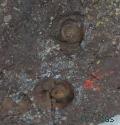Gastropods
Gastropods are well-known animals which have been associated with humans since the dawn of civilization. Their bodies were gathered for food and their shells were used as tools, ornaments, and later as money. Their widespread occurrence is clear evidence of their successful adaptation to different environments. During a long evolution, they are the only molluscan class to have colonized the majority of marine, freshwater, and terrestrial environments. Marine gastropods occur mostly in shallow-water benthic communities; however, some gastropod species have also lived in the deep sea (e.g., faunas associated with hydrothermal vents), and others, such as holoplanktic animals, have spent their whole lives as freeswimming gastropods. The terrestrial gastropods colonized most land environments, ranging from lowlands to high mountains, and including humid to arid biotopes of tropical to subarctic areas. Such adaptive radiation is quite exceptional amongst all animal phyla and is linked to the extraordinary morphological and functional diversity of their bodies and shells. The gastropods comprise one of the most diverse groups of living animals (the second after Insecta). All these facts, together with their long and rich fossil record, make gastropods a unique animal group for evolutionary, ecological, and biogeographical investigations. There follows a brief review of gastropod anatomy, shell morphology, classification, and more than 500 million years of evolution.
The Gastropoda forms one of eight molluscan classes, and is defined by several unique anatomical features which support its interpretation as a molluscan group derived from the same ancestor (i.e., monophyly). The most characteristic feature of gastropods is torsion of their soft bodies during early larval stages, producing a crossing of their nerve connectives, bending of the intestine, and twisting of the mantle cavity (together with associated structures, including the ctenidia, anus, kidney openings, etc.) anteriorly over the gastropod head.
(ex Frýda 2004)
Frýda, J. (2004): Gastropods, 378-388. In: Encyclopedia of Geology, R.C. Selley, L.R.M. Cocks, and I.R. Plimer (eds), Elsevier, 3200pp., ISBN 0-12-636380-3.
In the Virtual Museum there are total 1771 samples | ||||||||||||
Virtual museum of the Czech Geological Survey, www.geology.cz, (C) Czech Geological Survey, 2011, v.0.99 [13.12.2011]


![[ENG]](img/vlajka-cr.gif) Česky
Česky 






